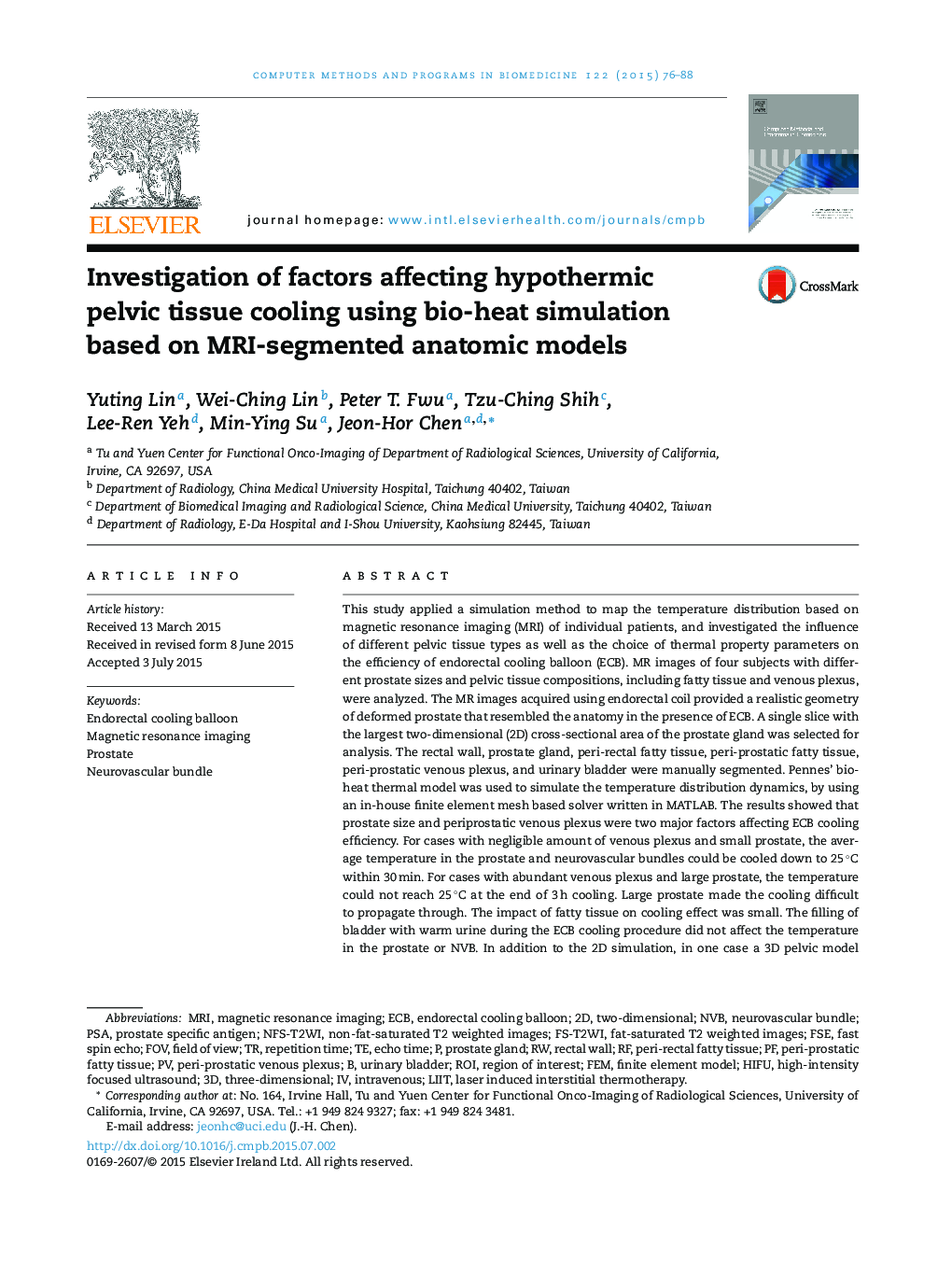| کد مقاله | کد نشریه | سال انتشار | مقاله انگلیسی | نسخه تمام متن |
|---|---|---|---|---|
| 468311 | 698212 | 2015 | 13 صفحه PDF | دانلود رایگان |
• This study investigated the influence of different pelvic tissue types as well as the choice of thermal property parameters on the efficacy of endorectal cooling balloon (ECB).
• Prostate size and periprostatic venous plexus were two major factors affecting ECB cooling efficiency.
• Large prostate made the cooling difficult to propagate through the prostate.
• Patients with abundant periprostatic venous plexus required a longer time for neurovascular bundle (NVB) cooling.
• This feasibility study demonstrated that the simulation tool could potentially be used for adjusting the setting of ECB for hypothermic radical prostatectomy.
This study applied a simulation method to map the temperature distribution based on magnetic resonance imaging (MRI) of individual patients, and investigated the influence of different pelvic tissue types as well as the choice of thermal property parameters on the efficiency of endorectal cooling balloon (ECB). MR images of four subjects with different prostate sizes and pelvic tissue compositions, including fatty tissue and venous plexus, were analyzed. The MR images acquired using endorectal coil provided a realistic geometry of deformed prostate that resembled the anatomy in the presence of ECB. A single slice with the largest two-dimensional (2D) cross-sectional area of the prostate gland was selected for analysis. The rectal wall, prostate gland, peri-rectal fatty tissue, peri-prostatic fatty tissue, peri-prostatic venous plexus, and urinary bladder were manually segmented. Pennes’ bioheat thermal model was used to simulate the temperature distribution dynamics, by using an in-house finite element mesh based solver written in MATLAB. The results showed that prostate size and periprostatic venous plexus were two major factors affecting ECB cooling efficiency. For cases with negligible amount of venous plexus and small prostate, the average temperature in the prostate and neurovascular bundles could be cooled down to 25 °C within 30 min. For cases with abundant venous plexus and large prostate, the temperature could not reach 25 °C at the end of 3 h cooling. Large prostate made the cooling difficult to propagate through. The impact of fatty tissue on cooling effect was small. The filling of bladder with warm urine during the ECB cooling procedure did not affect the temperature in the prostate or NVB. In addition to the 2D simulation, in one case a 3D pelvic model was constructed for volumetric simulation. It was found that the 2D slice with the largest cross-sectional area of prostate had the most abundant venous plexus, and was the most difficult slice to cool, thus it may provide a conservative prediction of the cooling effect. This feasibility study demonstrated that the simulation tool could potentially be used for adjusting the setting of ECB for individual patients during hypothermic radical prostatectomy. Further studies using MR thermometry are required to validate the in silico results obtained using simulation.
Journal: Computer Methods and Programs in Biomedicine - Volume 122, Issue 1, October 2015, Pages 76–88
